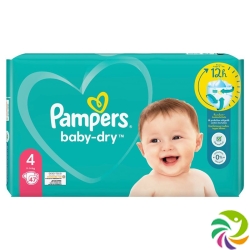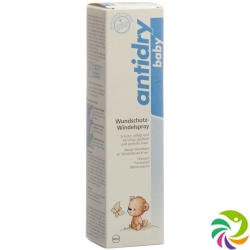Keep Your Baby's Skin Rash-Free: Top Tips for Preventing Nappy Rash

Diaper dermatitis is a common problem among babies that causes discomfort and irritation to the baby's sensitive skin. Almost all babies experience diaper rash at some point, as constant exposure to moisture and friction can lead to redness, inflammation, and discomfort. Although diaper rash is common, it can be frustrating for babies and parents alike. Fortunately, there are effective ways to prevent diaper rash and keep your baby's skin healthy and rash-free.
What Is Diaper Rash?
Diaper dermatitis is a skin irritation that occurs in the diaper area, resulting in symptoms such as redness, swelling, and discomfort. The affected skin may appear inflamed and sensitive, causing distress to both the child and the parents.
Common reasons
- Prolonged exposure to moisture: Continuous exposure to moisture from urine or feces can break down the skin's protective barrier, leading to irritation and rashes.
- Diaper friction: Repeated rubbing of a diaper against delicate skin can cause chafing and irritation, especially if the diaper is too tight or not changed often.
- Chemical sensitivities: Some babies may have sensitive skin that reacts to certain wipes, soaps, or diaper materials, causing further irritation.
- Yeast infections: A warm, moist environment can encourage yeast growth, which can lead to a secondary infection and worsen diaper rash.
Why Are Babies Prone to Diaper Rash?
The skin of babies is much thinner and more sensitive than the skin of adults, which makes it more vulnerable to irritation. A baby's delicate skin means it can easily become inflamed from moisture and friction, especially in the diaper area, where the skin is constantly in contact with urine, feces, and diaper materials.
The warm and moist environment inside the diaper creates ideal conditions for the reproduction of bacteria and fungi, especially yeast. When skin is exposed to moisture for long periods of time, it loses its natural protective barrier, making it more susceptible to infection. This environment not only softens the skin, increasing the risk of irritation from friction, but also promotes the growth of bacteria and fungi, which can lead to more severe diaper rash and discomfort for the baby.
Because babies' immune systems are still developing, their skin is less able to fight off these irritants and infections, making diaper rash a frequent problem. Understanding these factors highlights the importance of regular diaper changes, good hygiene, and good skin care to prevent and treat diaper rash.
Best Diaper Rash Treatment
Frequent Diaper Changes
One of the most important ways to prevent diaper rash is to change diapers frequently. When a baby's skin is exposed to moisture for long periods of time, it weakens the skin's natural barrier, making it more susceptible to irritation and rashes. Regular diaper changes reduce the amount of time the skin is in contact with moisture and irritants such as urine and feces, which are the main causes of diaper rash.
Try to change your baby's diaper as soon as it becomes wet or soiled, especially after a bowel movement, to keep the skin clean and dry. For newborns or babies with sensitive skin, this may mean changing diapers every two to three hours, even if they look only slightly wet. Making sure the diaper area is dry before putting on a new diaper can also help minimize the risk of irritation.
Also, choose diapers with high moisture absorption, such as Pampers Baby Dry with three absorbent channels. These channels help distribute moisture evenly throughout the diaper, preventing wet marks between the legs and providing up to 12 hours of dryness.
Nappy Rash Cream
Using a barrier cream, such as one containing zinc oxide or petroleum jelly, can create a barrier between your baby's skin and moisture, helping to prevent diaper rash and irritation. These creams form a protective layer that seals out moisture and protects the skin from the friction caused by diapers, significantly reducing the risk of redness, swelling and rashes. For example, Antidry baby diaper with zinc oxide, panthenol and beeswax perfectly protects, conditions and soothes red and irritated skin. Also prevents soreness in the diaper area.
For the best treatment of diaper rash, it's important to apply a generous layer of cream at each diaper change, especially before your baby goes to bed or during sleep when the diaper is likely to stay on longer. This provides continuous protection during long periods of wetness, which is a common cause of diaper rash. Zinc oxide creams are particularly effective because they are thick and stay on the skin for long-lasting protection.
Choose the Right Diapers
Breathable materials allow air to circulate, reducing moisture build-up and minimizing friction between the diaper and your baby's skin. Made with soft absorbent materials, diapers help keep skin dry by quickly wicking away moisture, which is key to preventing irritation and rashes.
It's also important to make sure the diaper fits properly. A diaper that is too tight can rub against your baby's delicate skin, causing chafing and discomfort, while a diaper that is too loose can lead to leaks, increasing the risk of prolonged exposure to wetness. The ideal fit should be tight enough to prevent leakage, but not so tight that it marks the skin or restricts airflow.
Gentle Cleaning
After each diaper change, it is important to clean your baby's skin thoroughly to remove all traces of urine and stool, which can irritate the sensitive skin and lead to a rash. Choose unscented wipes or a soft washcloth dampened with warm water to gently clean the diaper area without causing further irritation.
Harsh, scented wipes can irritate your baby's delicate skin, so it's best to choose hypoallergenic, unscented wipes to minimize the risk of irritation. If you use a washcloth, make sure it's soft and gentle to the touch to avoid harsh scrubbing that can cause chafing.
After cleaning, make sure the diaper area is completely dry before putting on a new diaper. Gently dry the skin with a clean towel to avoid moisture build-up, which can lead to diaper rash.
Disclaimer: This article contains information about preventing bedwetting in children and is not medical advice. Always consult your pediatrician with any questions or concerns about your child's skin health or if you suspect severe diaper rash.


